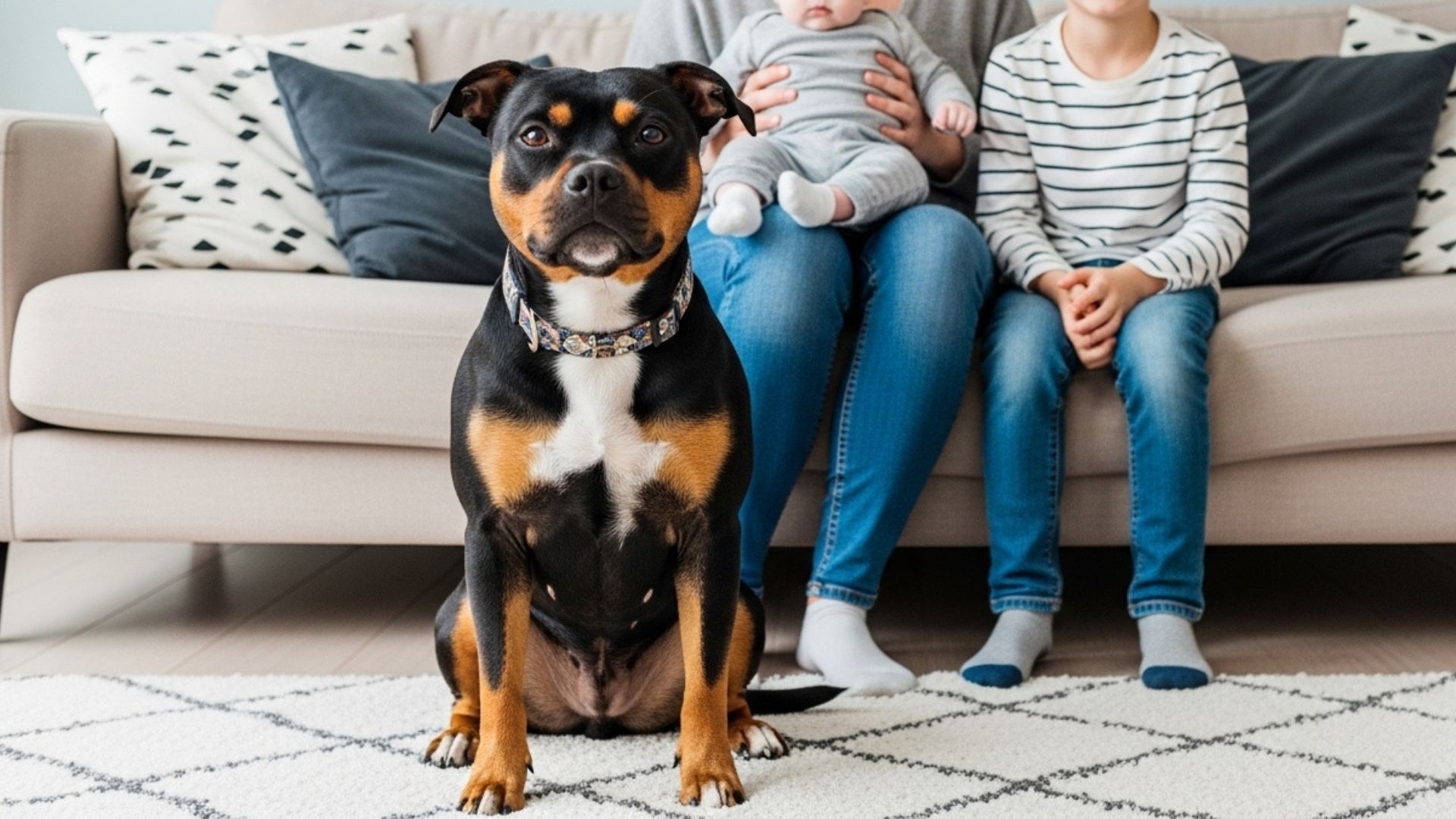Have you ever imagined a furry sentinel lounging indoors, silently safeguarding your home while you sleep? Studies reveal that neighborhoods with higher dog ownership statistics show significantly lower rates of robbery and homicide — making canine companions genuine protectors.
Now picture this happening inside your own living room: a majestic presence greeting unfamiliar footsteps, not just barking, but watching. That’s the kind of reassurance a well-chosen indoor guard dog brings to your family’s everyday life.
In this article, we’ll explore the best guard dog breeds that combine physical presence, loyalty, and indoor-friendly temperaments. These dogs aren’t just pets — they’re guardians with couches and chew toys.
Whether you’re a city-dweller in an apartment or a suburban family home, the right guard dog can shift the vibe from “just another living room” to a fortress of companionship and protection.
Stay with us as we uncover which protective guard dog breeds strike the perfect balance of homebody comfort and vigilant watchdog instinct.
Best Indoor Guard Dog Breeds To Keep Family Safe
1. German Shepherd
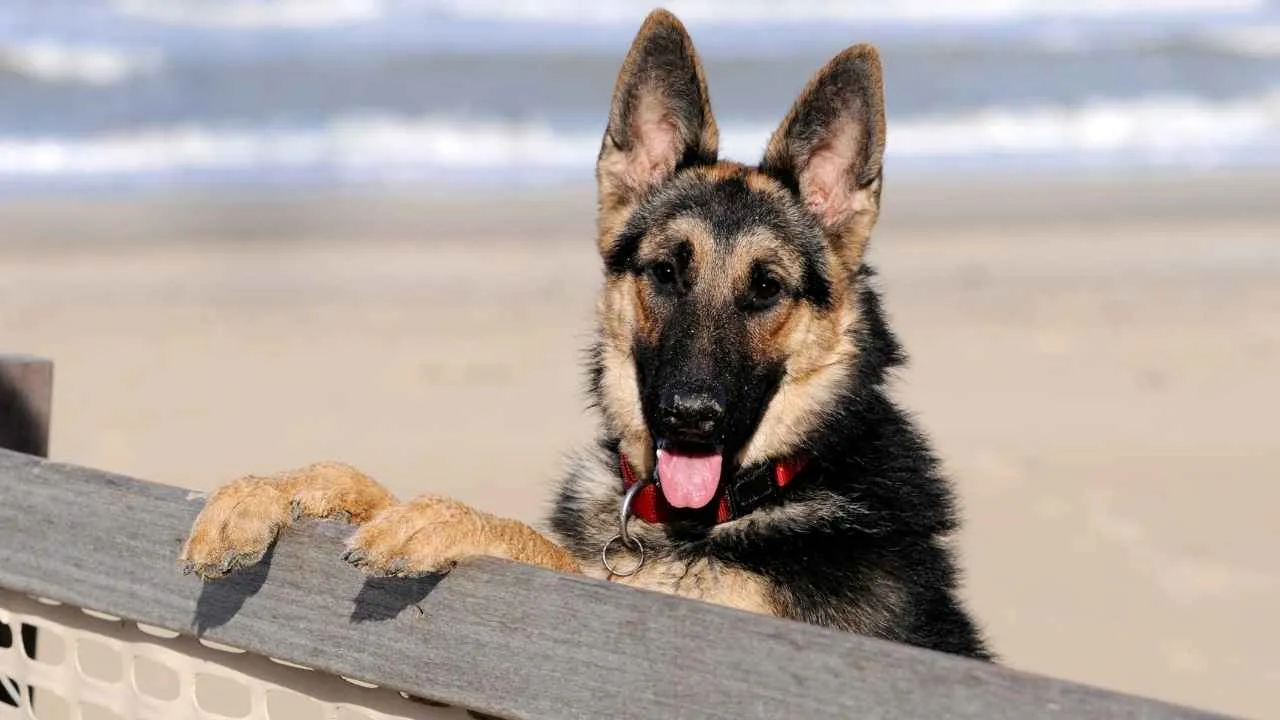
From the moment you meet a German Shepherd, you’re struck by its poised dignity and razor-sharp gaze—this breed defines “indoor guard dog” with muscle, mind, and heart. The German Shepherd stands as a sophisticated protector: large-sized, alert, incredibly trainable, and deeply loyal.
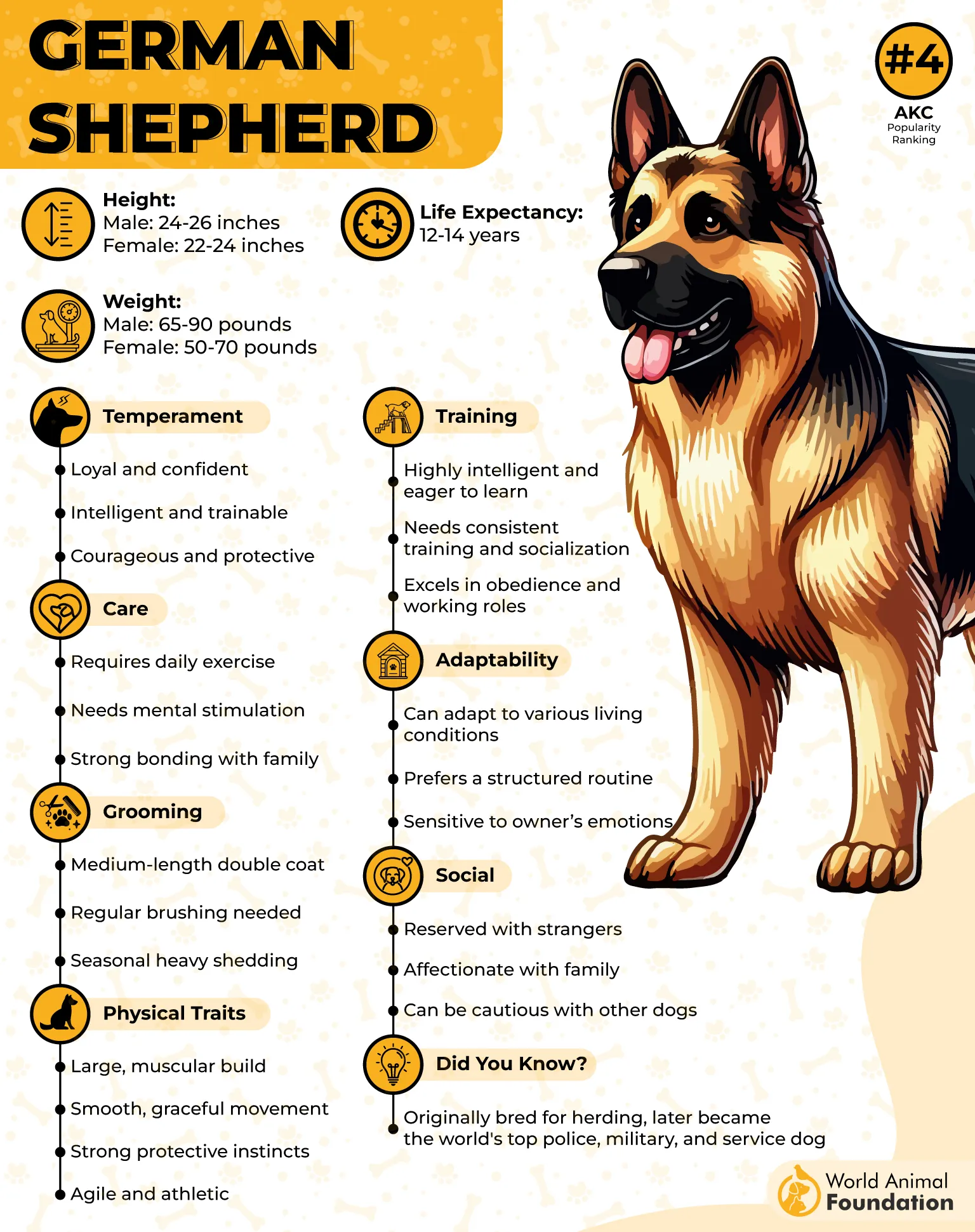
The German Shepherd’s roots trace back to German herding stock in the late 1800s, when it was refined for intelligence, obedience, and protective instinct. Today, that legacy shows in how the breed watches over its home: confident, circumspect, always assessing.
Indoor Compatibility & Lifestyle Fit
Capable of thriving indoors as long as mental stimulation and exercise are met.
Moderate shedding with brushing is required during seasonal molts.
Fits into a family lifestyle, especially when the dog is included in daily household life rather than isolated.
Training, Socialization & Care Guide
Begin obedience early: this breed excels with structured training and reinforcement.
Socialize frequently so that the protective instinct is channeled rather than overreactive.
Provide a daily routine that includes bursts of activity (play, tracking, obedience) and calm-down time indoors.
Health-wise, the German Shepherd may contend with hip/elbow dysplasia and bloat—owners must monitor diet, exercise, and vet check-ups.
When properly trained and housed, this breed doesn’t just guard your family—it becomes part of its core. A German Shepherd indoors means strength meets sensitivity.
2. Doberman Pinscher
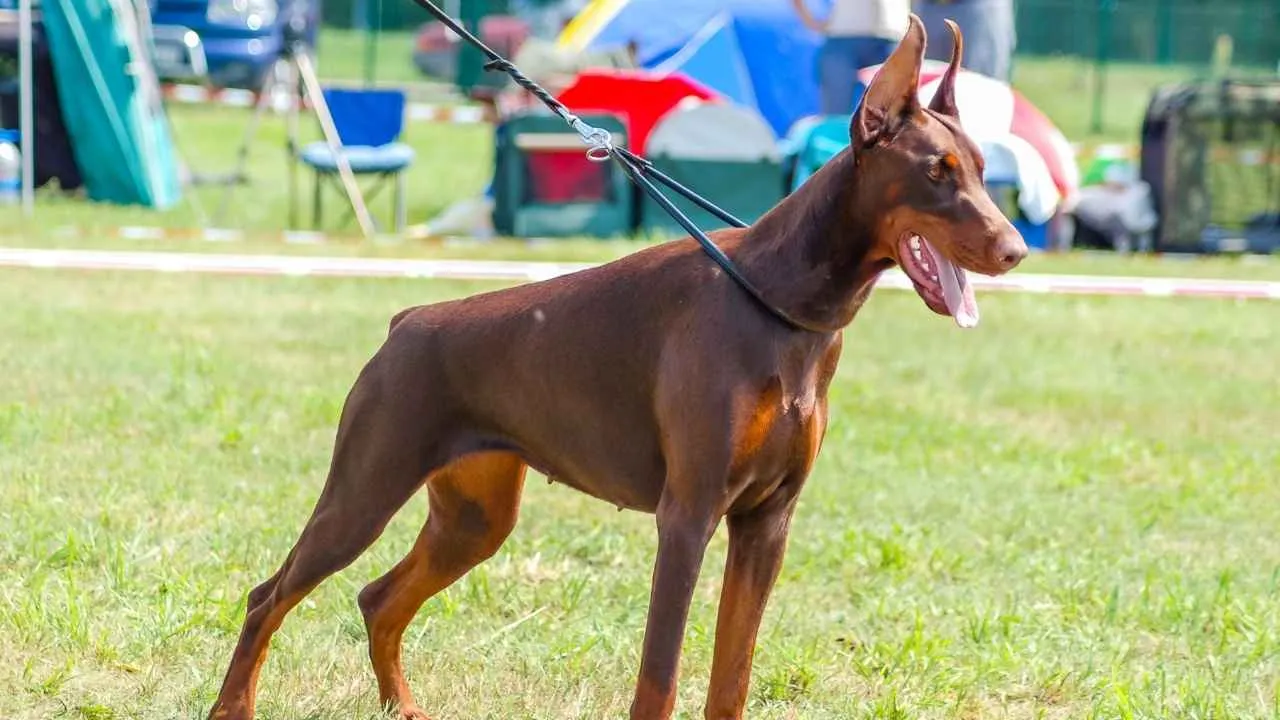
Imagine a sleek, alert silhouette in your hallway—eyes fixed, stance ready—this is the Doberman making its presence known. With a striking build and intense focus, the Doberman Pinscher is proof that guard dog power can coexist with family warmth.
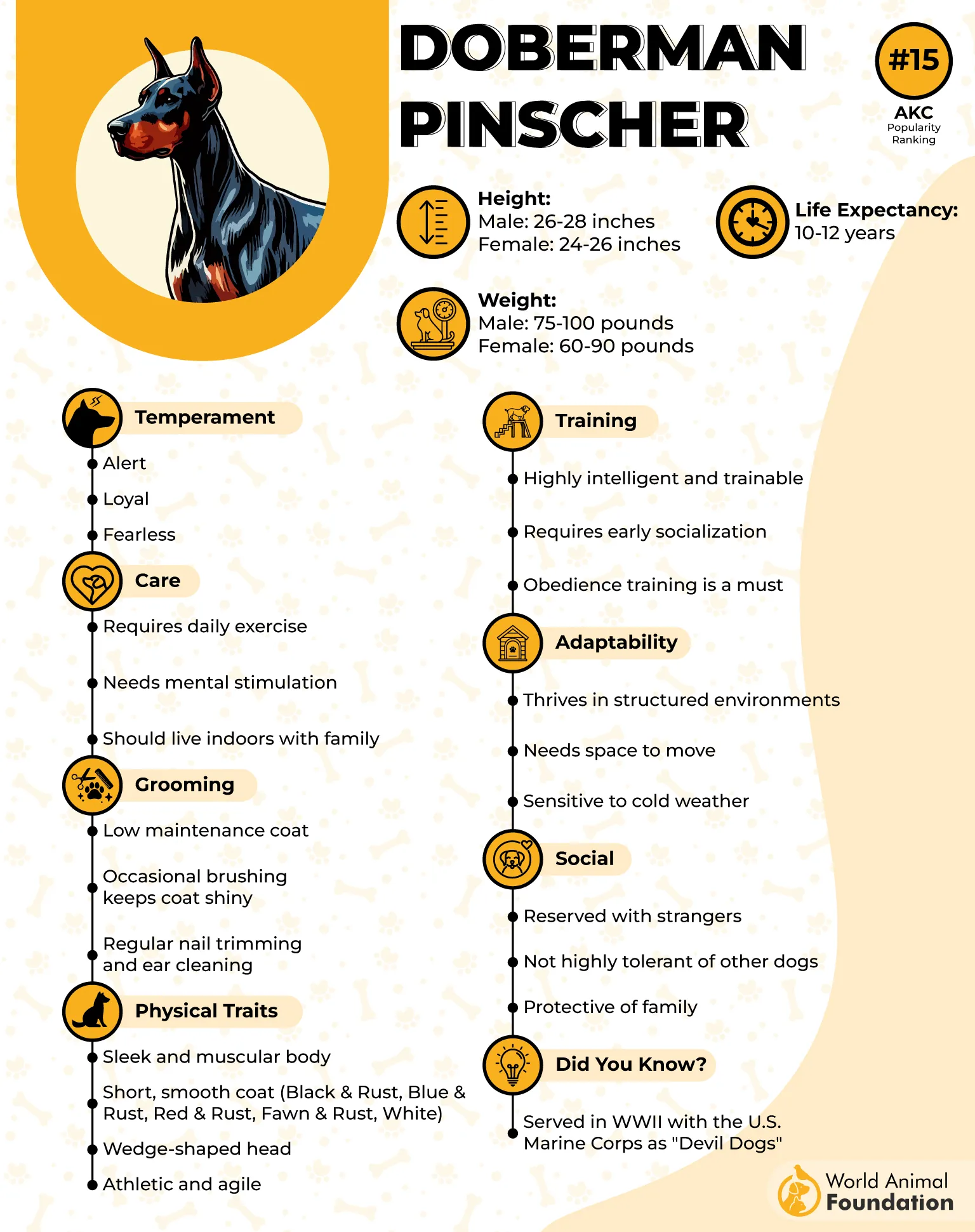
Origins: In late 19th-century Germany, tax collector Louis Dobermann created this breed to accompany him on his rounds, combining speed, strength, and loyalty into a protector dog.
The breed’s personality brings that legacy home: incredibly intelligent, intensely loyal, finely tuned to human emotion—and naturally predisposed to watchfulness.
Indoor Compatibility & Lifestyle Fit
Demonstrated ability to live well indoors, including apartment settings, when given adequate stimulation.
A short coat means lower grooming demands; ready for family life.
Requires mental and physical outlets: this breed thrives on meaningful engagement—not passive lounging.
Training, Socialization & Care Guide
Positive-reinforcement obedience forms the foundation; Dobermans learn fast but require consistency.
Guard-specific training (boundary commands, alert cues) harnesses its protective instincts effectively.
Socialization must be proactive: to prevent overprotectiveness and channel vigilance rather than anxiety.
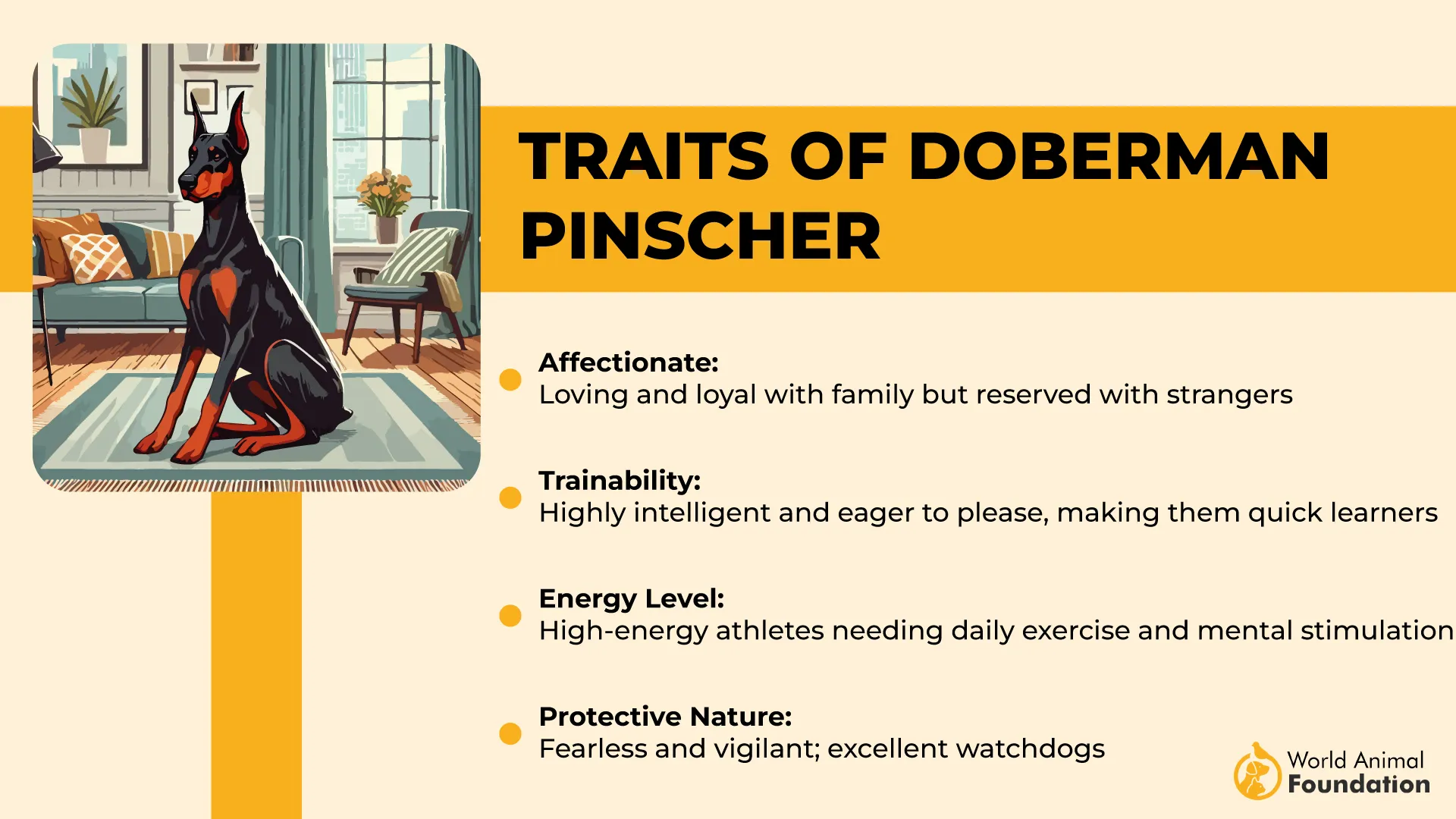
In terms of health and longevity, Dobermans require rates of exercise, nutrition tailored to their muscular build, and monitoring for certain genetic conditions like von Willebrand’s disease or cardiomyopathy.
For a family looking for an indoor guardian with razor-sharp reflexes and an unwavering bond, the Doberman Pinscher hits the mark—elegant, commanding, and affectionate.
3. Bullmastiff
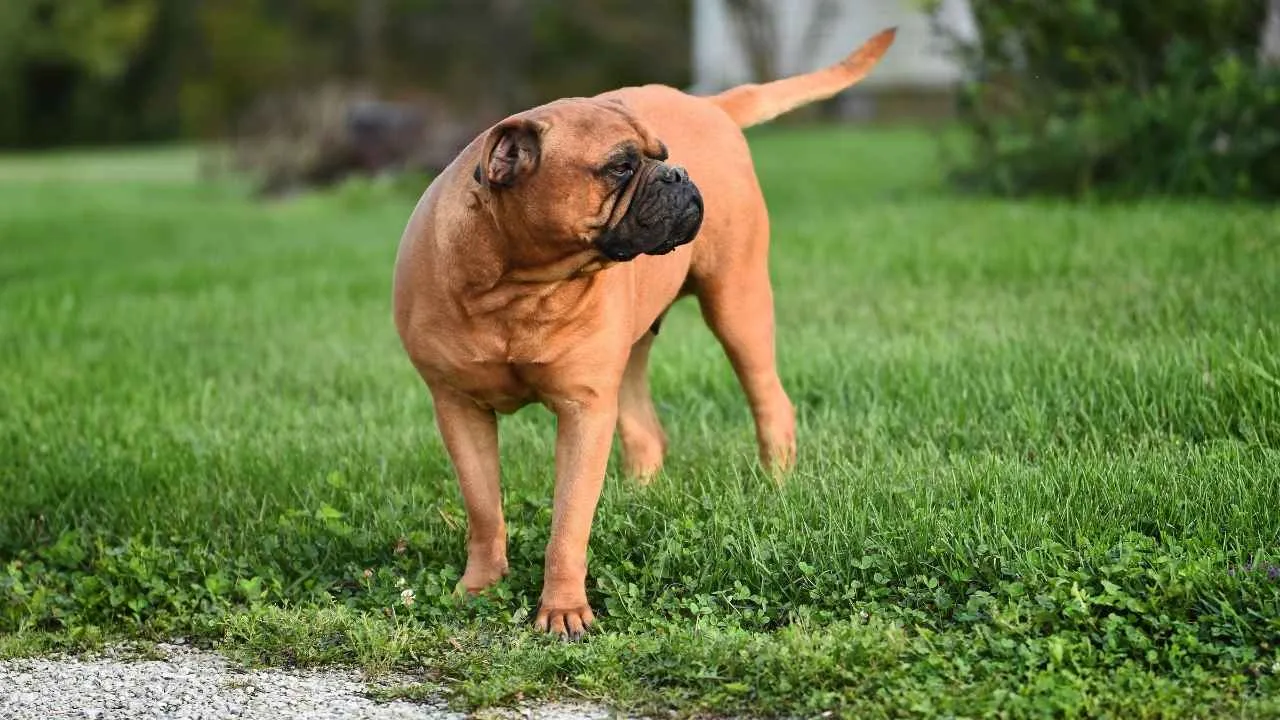
One glance at a Bullmastiff, and you realize this isn’t a dog—it’s a living fortress wrapped in muscle and calm authority.
Known as the “silent guardian,” this breed rarely barks but makes its presence impossible to ignore. Its sheer power is balanced by a gentle devotion that makes it one of the most trusted indoor protectors.
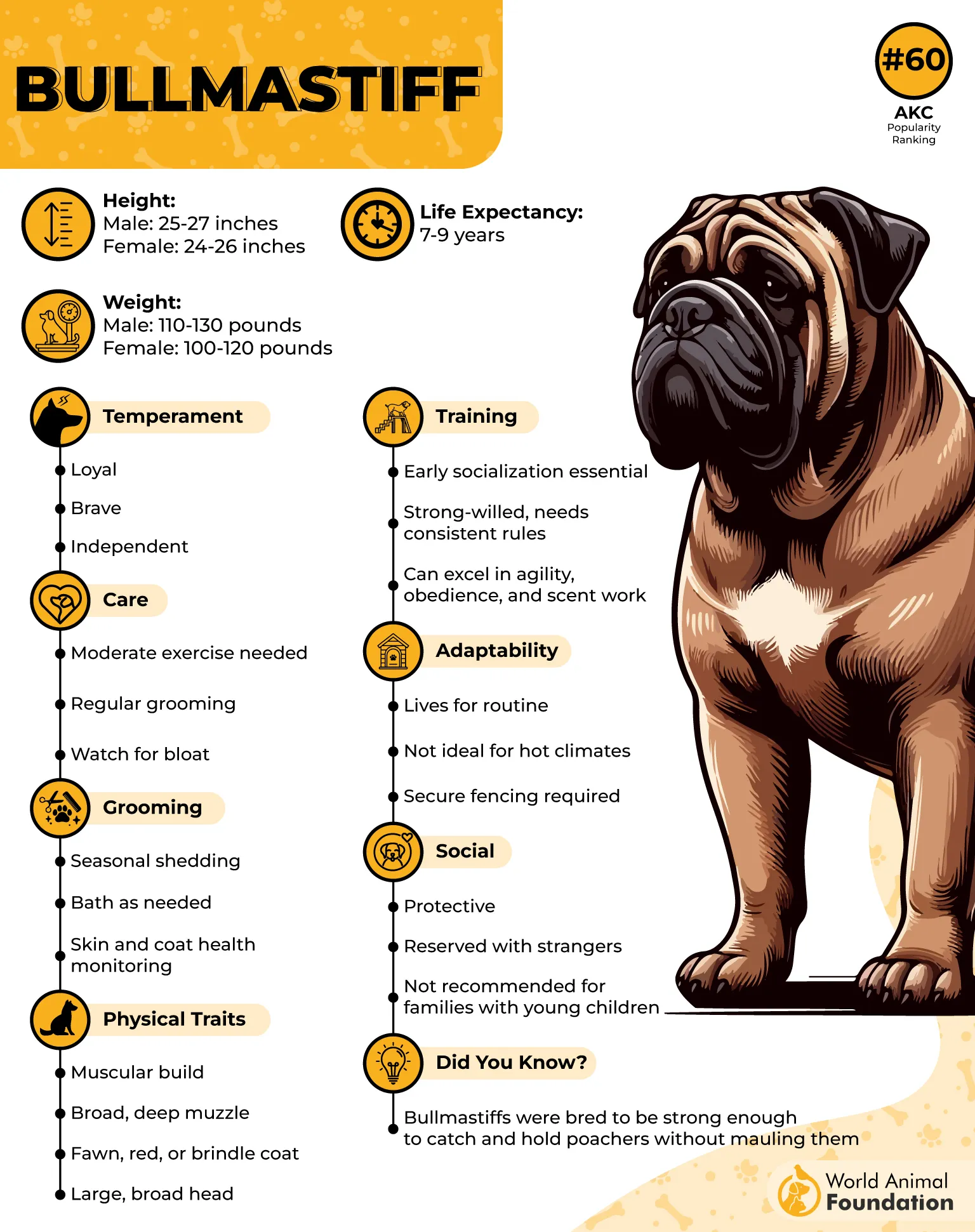
PetMD reveals that originating in 19th-century England, the Bullmastiff was bred to stop poachers without harming them—strength guided by restraint. That same self-control makes it a family favorite today.
Loyal, courageous, and affectionate, it forms deep emotional connections while keeping a quiet eye on its surroundings.
Indoor Compatibility & Lifestyle Fit
Naturally calm and relaxed inside the home.
Adapts well to family schedules, preferring human company over solitude.
Minimal exercise needs—short walks and companionship suffice.
Training, Socialization & Care Guide
Responds best to confident but gentle leadership.
Early socialization ensures balanced protection instincts.
Grooming is minimal; regular brushing keeps the coat sleek.
Health-wise, Bullmastiffs are prone to hip and elbow dysplasia, so maintaining a healthy weight and steady exercise routine is crucial. With proper care, they live comfortably indoors as affectionate, steady-hearted guardians.
A Bullmastiff’s loyalty doesn’t shout—it stands, watches, and protects with quiet power.
4. Akita
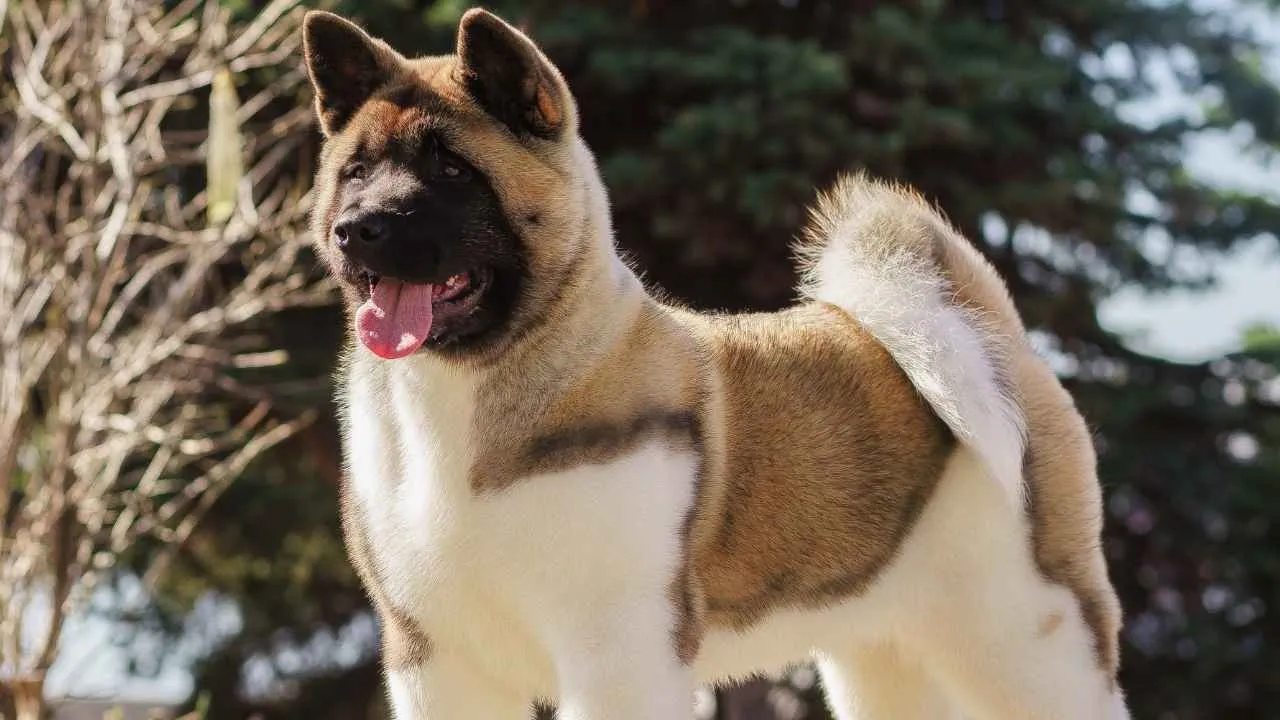
The Akita commands attention without even trying—its stance regal, eyes sharp, presence unmistakably powerful. It’s no wonder this Japanese breed symbolizes loyalty; an Akita won’t just guard your home, it will guard your honor.
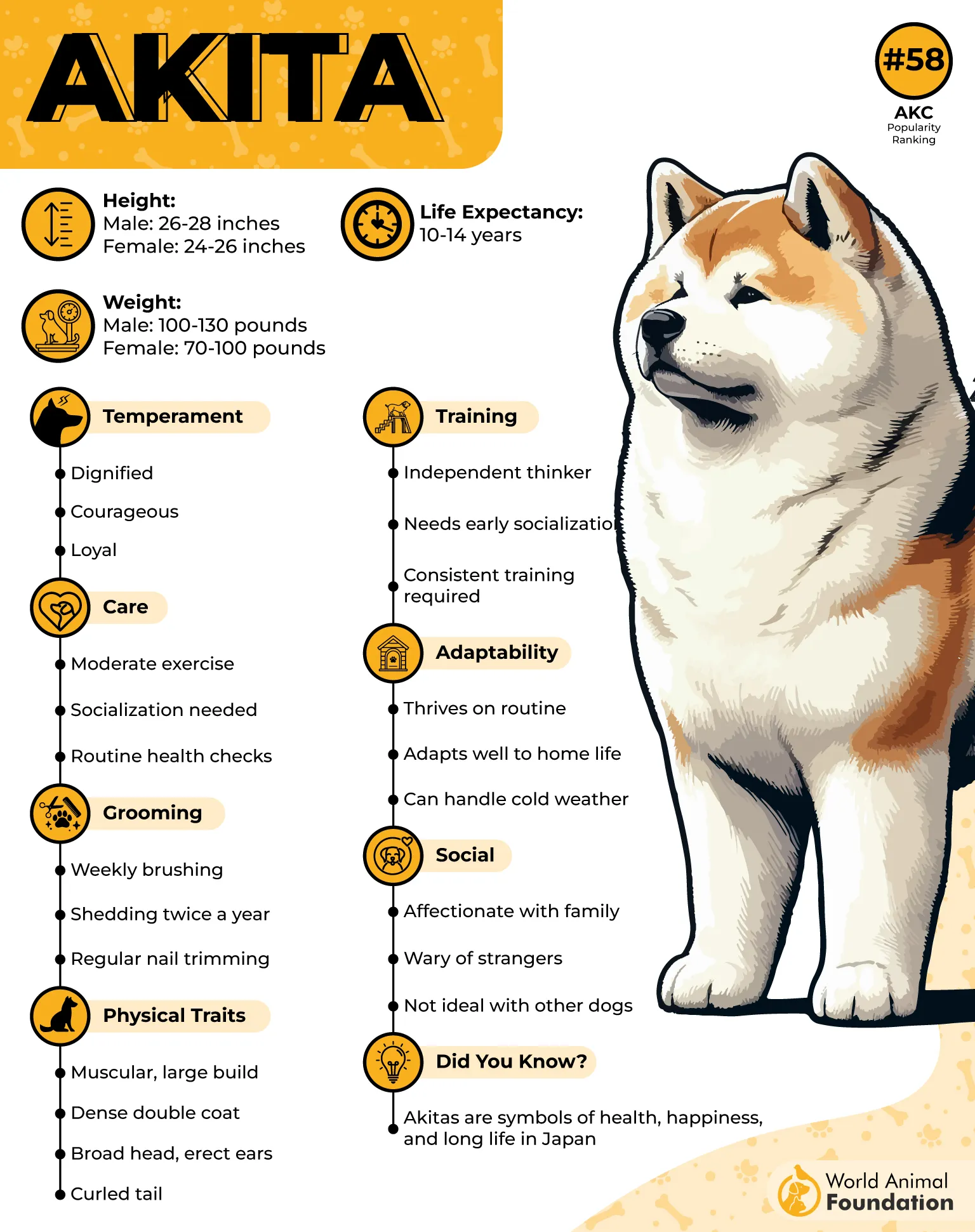
Originally bred to protect Japanese nobility and hunt large game, the Akita carries centuries of disciplined strength.
In the home, it balances its courage with calm composure, observing silently until action is needed. Its devotion to its family runs deep, forming an unbreakable bond built on trust and mutual respect.
Indoor Compatibility & Lifestyle Fit
Enjoys peaceful indoor environments where structure and calmness prevail.
Prefers closeness with family and thrives on shared routines.
Needs moderate exercise and mental stimulation to stay balanced.
Training, Socialization & Care Guide
Early socialization curbs territorial behavior.
Positive reinforcement and consistency earn long-term loyalty.
Regular brushing keeps the dense coat healthy and reduces shedding.
PDSA claims that the Akita may face issues such as thyroid imbalance and hip dysplasia, so routine veterinary checks are key. Within a home, this breed is both protector and confidant—a dignified guardian whose silent watch turns any space into a sanctuary.
5. Giant Schnauzer
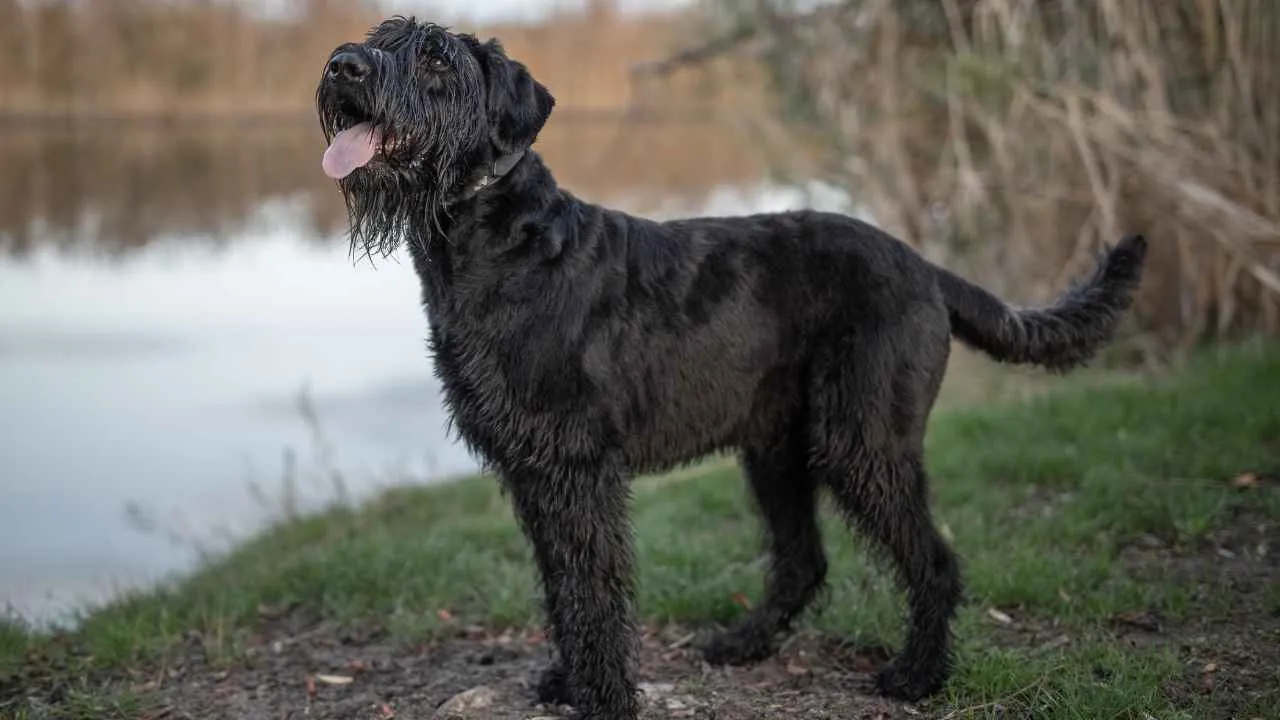
Think of the Giant Schnauzer as a sleek, steel-gray sentinel with a mind as sharp as its gaze. This breed radiates intelligence and power, but its loyalty transforms it into a loving, attentive house companion. Few dogs combine elegance and vigilance like this one.
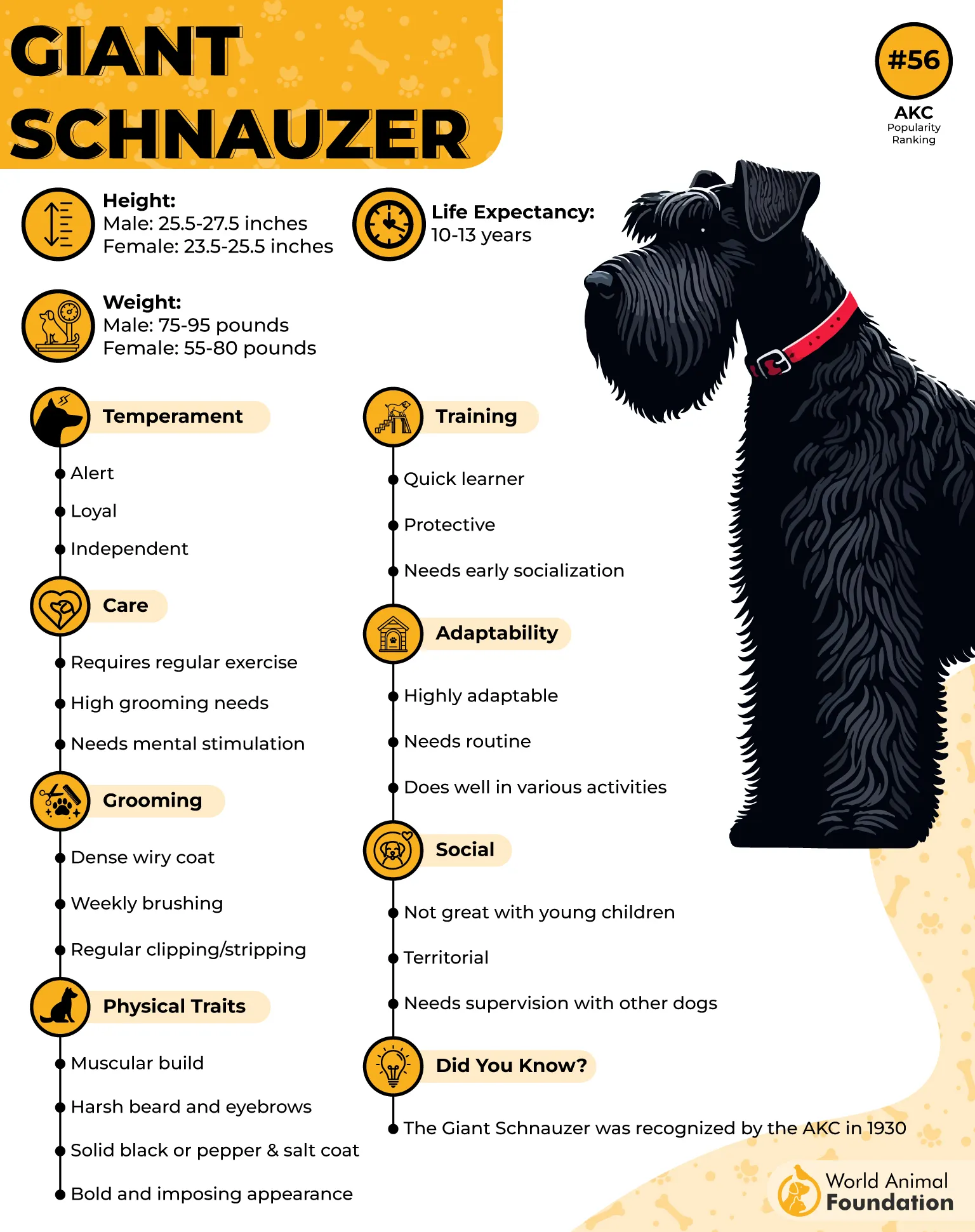
Purina adds that bred in Germany for herding and later guarding breweries and factories, the Giant Schnauzer developed an unmatched work ethic and instinctive protectiveness. Indoors, it channels that intensity into companionship and attentiveness, often shadowing its favorite person from room to room.
Indoor Compatibility & Lifestyle Fit
Fits comfortably in large homes or apartments with active families.
Needs daily play and exercise for mental balance.
Adaptable to family schedules and thrives when given tasks or structure.
Training, Socialization & Care Guide
Benefits from advanced obedience and agility training to stimulate the mind.
Early exposure to new environments ensures well-rounded confidence.
Requires frequent grooming due to its wiry coat and dense underlayer.
Prone to certain joint conditions, this breed benefits from steady activity and a nutritious diet. Inside a home, a Giant Schnauzer brings alert protection coupled with boundless loyalty—an elegant guardian that never clocks out.
6. Great Dane
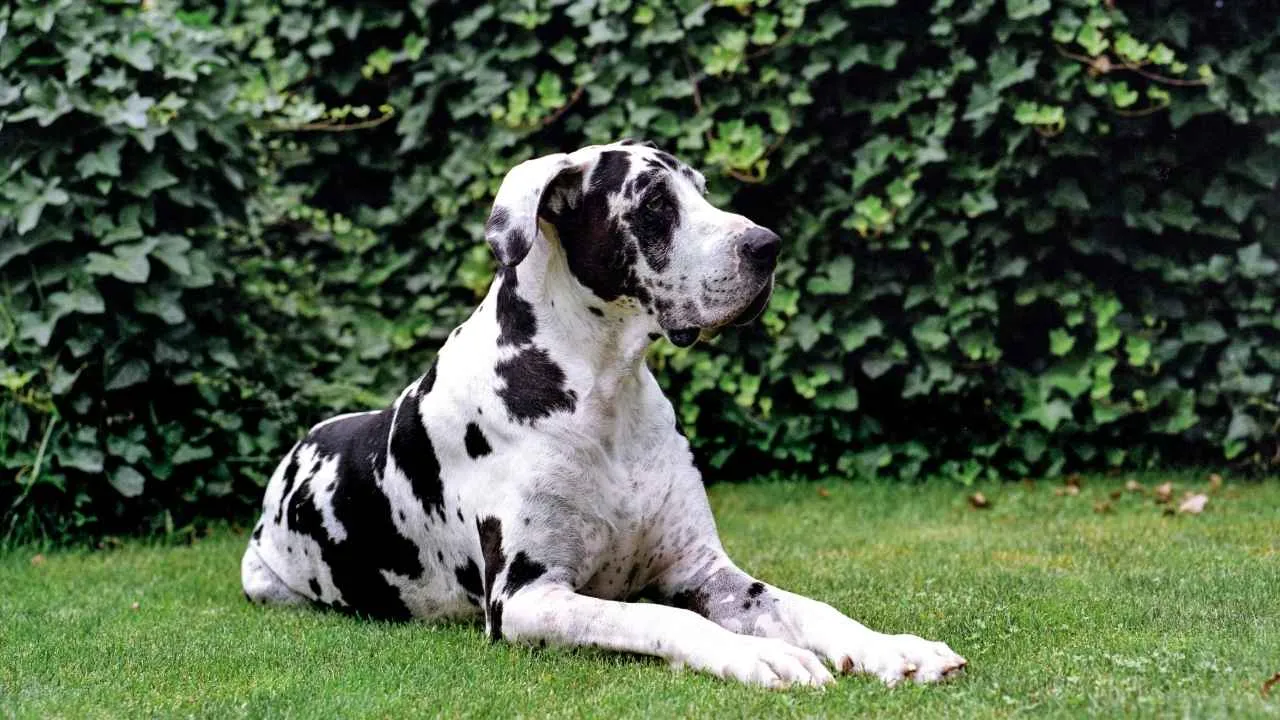
A Great Dane is like a living paradox—massive yet gentle, imposing yet calm. Often called the “Apollo of dogs,” it turns heads with size alone but wins hearts with its softness. Indoors, its quiet nature and deep bond with family make it an unforgettable protector.
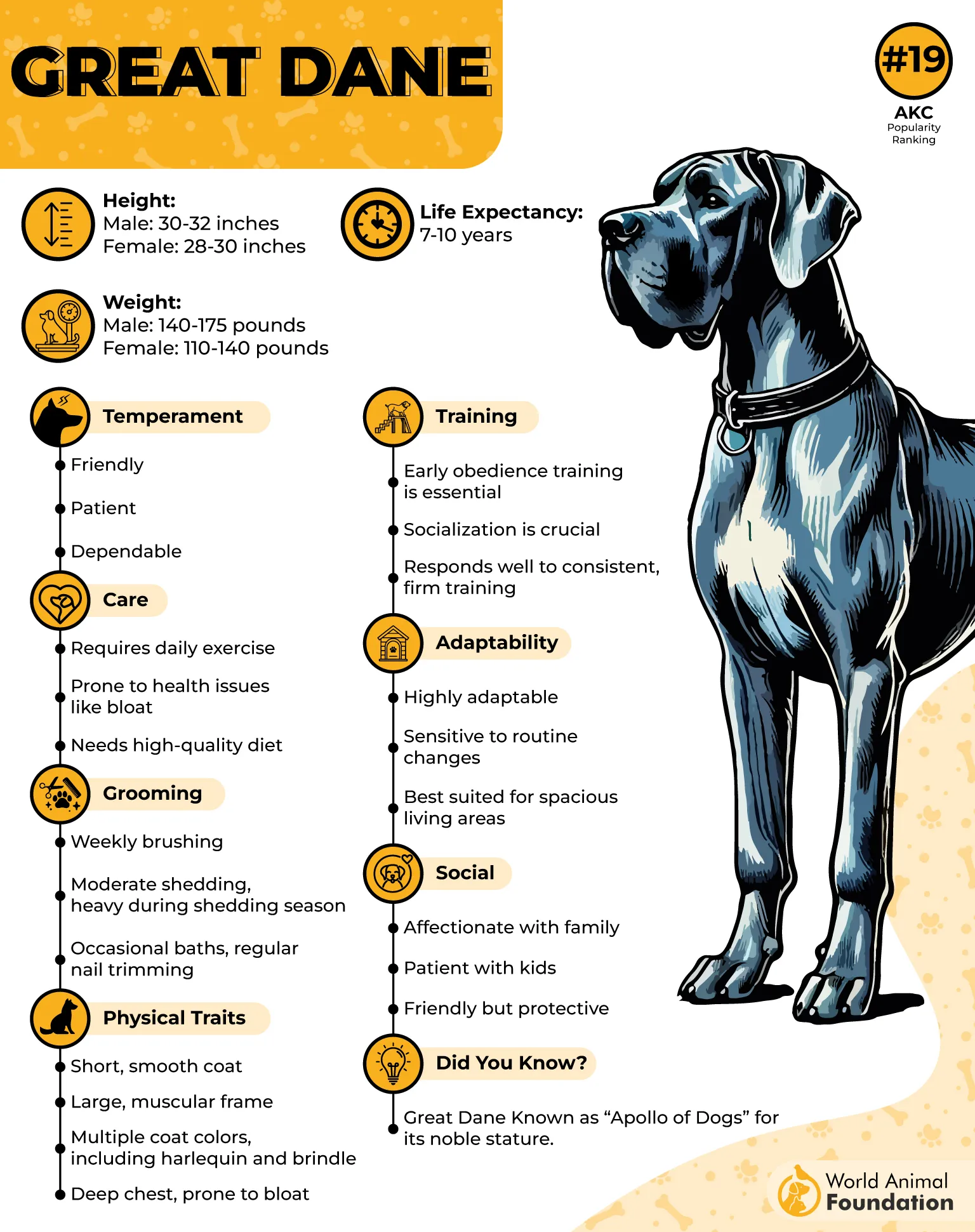
Once bred in Europe to hunt wild boar, the Great Dane evolved from fierce chaser to affectionate companion. Its towering frame still offers security, but its temperament now centers on patience and affection.
This breed believes in protection through presence—a watchful shadow rather than a loud alarm.
Indoor Compatibility & Lifestyle Fit
Surprisingly suited to indoor living due to its low activity levels.
Craves close human connection and soft resting spaces.
Prefers consistent routines and calm surroundings.
Training, Socialization & Care Guide
Gentle, reward-based training helps nurture confidence.
Early socialization reduces timidity in public spaces.
Requires a balanced diet to support its large frame and joint health.
Common health considerations include bloat and heart conditions, so preventive vet care is essential. The Great Dane redefines what it means to be a house guardian—massive in frame, mighty in love, and serene in spirit.
7. Chow Chow
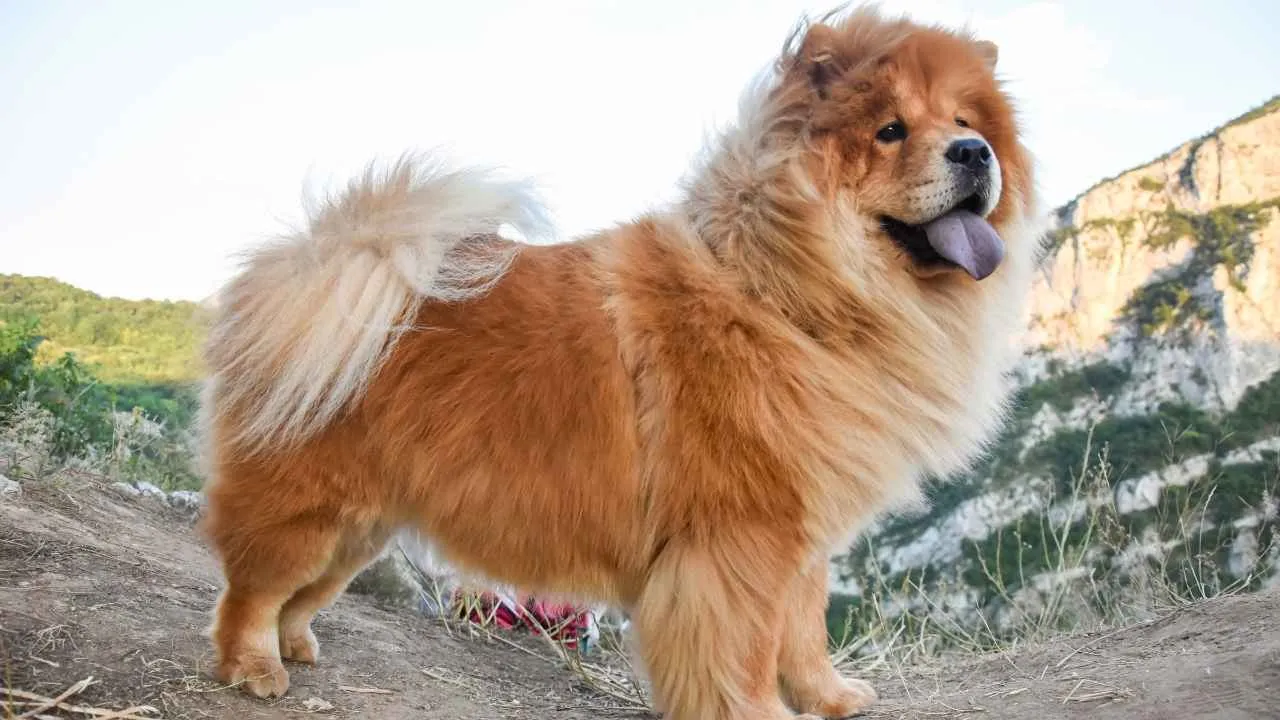
At first glance, the Chow Chow looks like a plush lion come to life—majestic, mysterious, and somewhat aloof. Yet behind that cloud of fur lies one of the most devoted home guardians in the canine world. This ancient Chinese breed is as protective as it is proud.
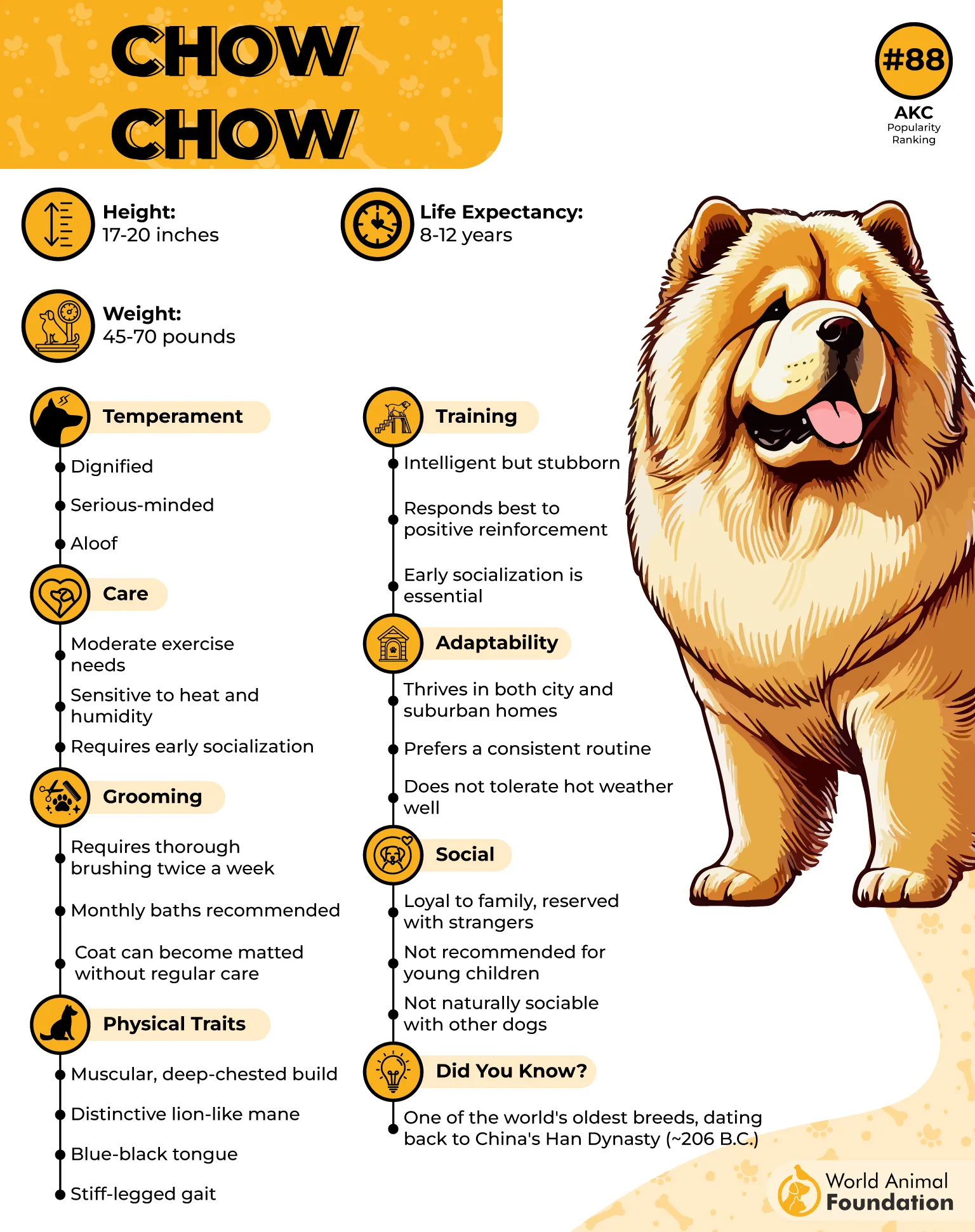
Originally bred as palace guards and hunters, Chow Chows still carry an air of royalty. Their behavior indoors mirrors that dignity: calm, observant, and utterly loyal to their chosen people. They don’t seek attention from strangers but offer unwavering affection to family.
Indoor Compatibility & Lifestyle Fit
Perfect for quiet households with steady routines.
Comfortable spending time indoors with moderate exercise needs.
Appreciates cool, well-ventilated spaces due to thick fur.
Training, Socialization & Care Guide
Requires firm, patient, and respectful training to earn trust.
Regular brushing prevents matting and keeps the double coat healthy.
Early socialization builds confidence and reduces overprotectiveness.
Health concerns may include eye and joint conditions, so routine care is vital. The Chow Chow’s regal stillness makes it an exceptional indoor guardian—poised, faithful, and always ready to watch over the ones it loves most.
FAQs
How can I train my indoor guard dog to stay protective yet family-friendly?
Start proper obedience training from a young age, mixing firm structure with affection. Focus on positive reinforcement, proper socialization, and consistent training to balance alertness with warmth. This helps protective dog breeds develop calm confidence while remaining loving family pets.
How can indoor guard dogs adapt to apartment or small-home living?
Even a large dog can thrive in small spaces through daily exercise and mental stimulation. Give your protection dogs structured routines and teach quiet control of their loud bark. A calm family environment supports their natural protective instincts and relaxed temperament.
How can I keep my guard dog alert while indoors?
Engage your great guard dog in short training drills and games that spark focus. Rotate toys, practice scent work, and include other dogs or family members in activities. This maintains sharp instincts and keeps even the smartest breeds mentally strong indoors.
Conclusion
Choosing the right dog isn’t just about muscle—it’s about heart, instincts, and fun! The German Shepherd, Doberman, Bullmastiff, Akita, Giant Schnauzer, Great Dane, and Chow Chow prove that excellent guard dogs can also be great family pets with the right training and lots of love.
Other heroes like the Rottweiler, Belgian Malinois, or even the Australian Shepherd show how protective nature meets playfulness when raised in a healthy environment. Each one is built to deter intruders but melt your heart at cuddle time.
Start early training, keep up positive reinforcement obedience training, and enjoy raising a great family guard dog that’s both powerful and fun-loving—the perfect mix of protector and best friend.


